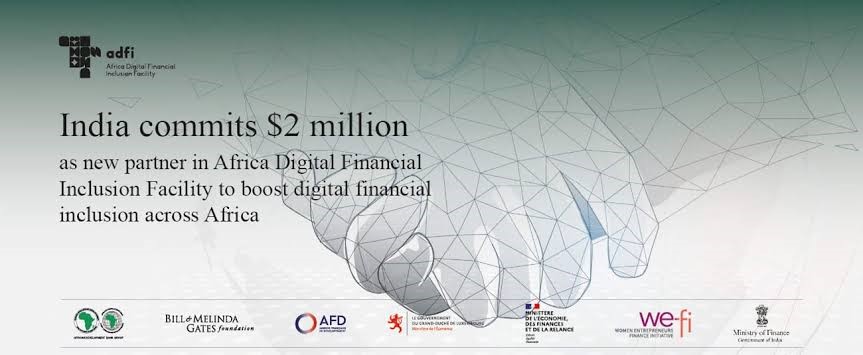FORGING A NEW INDIA-AFRICA DIGITAL COMPACT
FORGING A NEW INDIA-AFRICA DIGITAL COMPACT
Syllabus:
GS-3: ● India and Foreign Relations ● Digital Internationalization.
Why in the News?
On May 25th, Africa Day was celebrated, marking the founding of the Organisation of African Unity. It highlighted the continent’s digital ambitions and emphasized the importance of India’s growing role in co-creating affordable and inclusive Digital Public Infrastructure (DPI). A new India-Africa digital compact is increasingly being recognized as essential for global south cooperation, paving the way for enhanced India-Africa technology cooperation.
AFRICA’S DIGITAL TRANSFORMATION PUSH
- Strategic Blueprint: The African Union’s Digital Transformation Strategy (2020–2030) seeks to integrate technology in governance, education, and finance for inclusive socio-economic growth.
- Inclusive Agenda: Africa’s strategy emphasizes universal connectivity, digital literacy, and public-private partnerships to ensure that innovation benefits all segments, especially marginalized communities.
- Continental Coordination: Initiatives such as the Smart Africa Alliance aim to harmonize digital policies, boost collaboration, and drive investments across borders.
- Policy Platforms: The Policy and Regulatory Initiative for Digital Africa (PRIDA) focuses on establishing a coherent digital regulatory environment aligned with global standards.
- Development Goals: Africa views digital transformation as a catalyst for achieving the Sustainable Development Goals (SDGs), especially in sectors like health, education, and employment.
INDIA’S HISTORICAL DIGITAL FOOTPRINT
- Pioneering Step: India launched the Pan-African e-Network in 2009 to offer tele-medicine and tele-education services, laying the groundwork for digital diplomacy and India digital initiatives.
- Capacity Focus: India invested in human resource development through training programs, scholarships, and infrastructure supported by concessional lines of credit.
- Social Enterprises: Over time, low-cost Indian innovations began contributing to Africa’s digital ecosystem, expanding beyond traditional state-to-state development models.
- Diaspora Linkages: The large Indian diaspora in Africa facilitated mutual trust and collaboration, especially in tech-enabled health and education sectors.
- Digital Evolution: From bilateral grants to platform-based cooperation, India’s digital diplomacy reflects a shift to co-created, open-source solutions, promoting inclusive technological development.
DIGITAL PUBLIC INFRASTRUCTURE COLLABORATION
- Modular Identity: Togo collaborated with IIIT-Bangalore to build its national ID using India’s Modular Open-Source Identification Platform, rooted in Aadhaar principles, showcasing the potential of digital identity systems.
- Digital Zambia: Zambia’s partnership with the Centre for DPI in 2023 focused on creating integrated e-governance platforms across public services.
- Instant Payments: Namibia’s central bank inked a deal with NPCI to develop a UPI-style payment system, enhancing transaction speed and affordability, demonstrating the expansion of digital payment systems and financial inclusion technologies.
- Ghana Integration: Ghana is actively connecting its payment system with India’s UPI, demonstrating increasing African confidence in India’s DPI model and instant payment systems.
- Open-Source Strength: India’s public-good design, openness, and scalability offer a contrast to proprietary Western and state-surveillance-oriented Chinese digital models, promoting digital public goods.
COMPARATIVE DIGITAL DIPLOMACY LANDSCAPE
- Choice-Based Logic: African nations prioritize relevance and utility over ideological alignment when selecting digital partners, focusing on national needs.
- China’s Edge: China leverages state-backed financing to reduce costs in infrastructure-heavy digital projects, securing strategic digital presence.
- Multipolar Competition: The U.S., EU, China, and India are all seeking influence, with Africa emerging as a geopolitical digital frontier.
- India’s Proposition: Unlike others, India offers affordable, interoperable, and public-interest-driven solutions that promote inclusive digital governance.
- Beyond Tech Transfer: India emphasizes co-development, aligning tools with African socio-political realities rather than merely exporting technologies, fostering South-South digital cooperation.
CHALLENGES IN REALISING DIGITAL VISION
- Digital Divide: Africa has the largest digital exclusion globally due to high data costs, poor connectivity, and gender disparity in access.
- Infrastructure Gaps: Weak telecom and energy grids, especially in rural areas, remain bottlenecks for scalable digital expansion.
- Device Costs: Smartphones and basic digital hardware remain prohibitively expensive, limiting user participation in DPI-based ecosystems.
- Energy Bottlenecks: Digital infrastructure relies on consistent power, which is lacking in many African nations, stalling full implementation.
- Gender Gaps: Women remain disproportionately excluded from digital participation due to cultural, economic, and educational barriers.
STRATEGIC INITIATIVES TO CLOSE GAPS
- IIT Zanzibar Campus: India’s IIT Madras campus in Zanzibar, offering programs in AI and Data Science, symbolizes long-term digital capacity building and promotes AI adoption in India-Africa collaboration.
- Private Partnerships: Scholarships funded by Indian private firms will enable equitable access, ensuring skill transfer and innovation.
- Technical Training: Aligning education with market needs will create a pool of local tech talent, reducing dependency on external solutions and enhancing digital skills training.
- Institutional Support: India’s initiatives must be embedded in strong governance structures to ensure sustainable impact and local ownership.
- South-South Model: The collaboration exemplifies a South-South approach rooted in mutual benefit, not neocolonial aid or corporate profiteering.
TOWARDS A NEW DIGITAL COMPACT
- Mutual Respect: A new compact must be built on equal partnership, acknowledging Africa’s unique needs and co-designing custom digital tools.
- Inclusive Platforms: India’s DPI offers a baseline framework that African nations can tailor to local languages, cultures, and governance styles.
- Biometric Foundation: With 85% of African countries having digital ID systems, interoperability can fast-track service delivery and reduce fraud.
- Governance First: Emphasizing public interest over profit, India and Africa can jointly champion open governance frameworks and data protection frameworks.
- Scalable Blueprint: A compact anchored in institutional capacity, co-ownership, and technology sharing can serve as a model for the Global South.
Conclusion
India-Africa digital collaboration is gaining momentum, grounded in open-source infrastructure, affordability, and mutual learning. Africa’s digital goals align with India’s DPI model, offering scalable, inclusive, and customizable tools. A formal digital compact rooted in co-creation and trust can empower both regions, setting an example for equitable global digital cooperation amid growing geopolitical contestation. This partnership extends across various sectors, including healthcare, agriculture, and fintech, leveraging innovations like CoWIN for pandemic management and DigiLocker for secure document storage. Initiatives such as the e-VBAB project and India-Africa Hackathons further strengthen this digital bond, fostering innovation and addressing shared challenges in cybersecurity, digital health solutions, and smart city initiatives.
UPSC MAINS PRACTICE QUESTION
Discuss the significance of Digital Public Infrastructure (DPI) in enhancing India-Africa relations. In what ways can a formal India-Africa Digital Compact promote inclusive growth and South-South cooperation?





